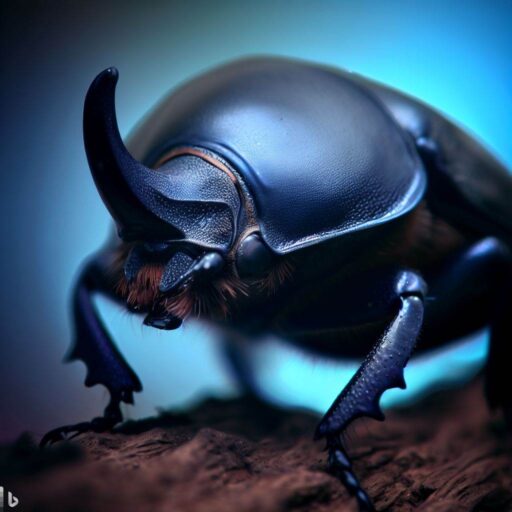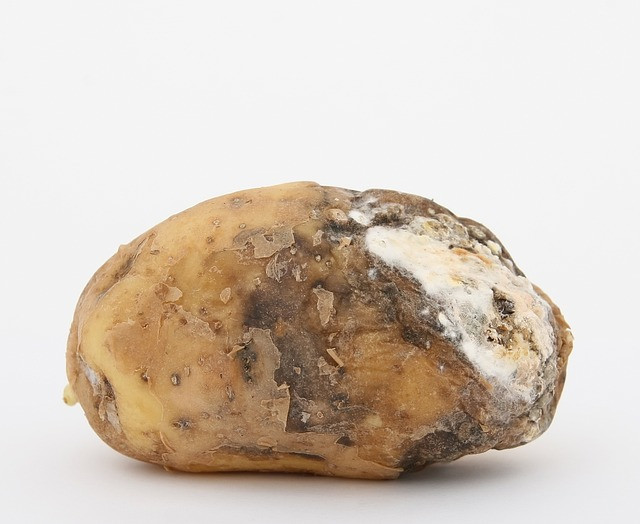.jpg)
- Potato bugs, also known as Colorado potato beetles, are destructive pests that feed on various crops and plants.
- They have a preference for potato plants, but they also feed on other members of the nightshade family, such as tomatoes and eggplants.
- Controlling potato bugs can be challenging, as they have a rapid life cycle and develop resistance to chemical control methods. Cultural control methods, such as crop rotation and handpicking, can help manage the infestation.
Potato bugs, also known as Colorado potato beetles, have been a source of fascination and concern for farmers and researchers alike.
In this section, we’ll delve into the definition and characteristics of potato bugs, shedding light on their unique biology and behavior.
Furthermore, we’ll uncover the history and significance of these pests, offering a glimpse into their impact on crops and the efforts to manage their population.
With a deeper understanding of potato bugs, we can navigate the world of agriculture more effectively.
Definition and characteristics of potato bugs

Potato bugs, also known as Colorado potato beetles, are insects of the family Chrysomelidae. They have oval-shaped bodies, yellowish-orange color, and black stripes on their elytra.
They measure about 10mm and can fly short distances.
The larvae are dark red or orange with black heads, long legs, and voracious feeding habits. They primarily feed on plants of the Solanaceae family – potatoes, tomatoes, eggplants, and peppers.
They use mandibles to chew the leaves and stems of these plants, which can cause significant damage to crops.
These pests go through metamorphosis. Eggs are laid on the undersides of leaves near the plant base. The larvae go through four instar stages where they molt and grow larger.
Then, they pupate in soil or debris before emerging as adults.
Managing potato bugs is difficult. They quickly reproduce and disperse. Plus, they have developed insecticide resistance. Crop rotation, deep plowing, and regular scouting can help control them.
Historically, they are native to North America. But, they have spread worldwide due to global trade and transport of infested plant materials.
Since their 19th century discovery in Colorado, potato bugs are a major pest for potato growers.
Overall, knowing about potato bugs – their definition, characteristics, diet, life cycle, behavior, and control challenges – is necessary for effective management and reducing their economic impact.
History and significance of potato bugs
Potato bugs, also known as Colorado potato beetles, have a major history and effect on farming. They come from the Rocky Mountains in North America. Their range expanded when potatoes were grown.
Potato bugs cause lots of damage to potato crops, leading to money lost for farmers. They were first seen as a pest in the mid-1800s.
They quickly spread across North America and Europe. This emphasizes their significance.
There was a lot of potato cultivation during this time. This made food for the potato bugs. They could adapt and reproduce. This made them a real threat. T
he damage they caused to potato crops shows their history and impact.
The economic impact of potato bugs is huge. They eat the foliage, reducing the plants’ health and yield.
Severe infestations lead to big losses for small and large farms. This shows the importance of potato bugs and their effect on potato farming.
To control these pests, many methods have been used. These include crop rotation, taking off sick plants, and sanitation. These show that people know how important the potato bug is.
Insecticides are sometimes used as a last resort. This shows the difficulty of stopping potato bugs and the need for effective measures.
In conclusion, the history and significance of potato bugs is due to their damage to potato crops and the money lost by farmers. To control them, many methods have been used.
This shows the recognition of their importance. By using control methods, the agricultural community wants to reduce the damage from potato bugs and keep potato farming going.
The diet of potato bugs
Potato bugs, also known as Colorado potato beetles, have a voracious appetite, and understanding their diet is crucial in managing their impact on crops.
In this section, we will explore the feeding habits of potato bugs and the plants they prefer. By gaining insight into their dietary preferences, we can implement effective strategies to protect our plants from these destructive pests.
Feeding habits of potato bugs
Potato bugs are voracious feeders. They use their needle-like mouthparts to pierce plants and extract sap. This causes damage to crops, reducing photosynthesis and growth.
Farmers and agricultural experts must find control methods because of the damage these pests cause.
The economic impacts are substantial. Potato bugs spread quickly and cause financial losses. Management strategies are needed to reduce their impact.
Preferred plants and crops of potato bugs

Potato bugs have a preference for plants and crops of the Solanaceae family. This includes potatoes, tomatoes, peppers and more. These crops are easily damaged by potato bug feeding habits.
Other edible plants, such as eggplants and tobacco, are also part of this family. Potato bugs may feed on nearby weeds, however they usually avoid non-solanaceous plants.
Farmers must stay vigilant to protect their crops from potato bug infestations. Knowing the preferred plants of potato bugs is key to reducing crop damage with effective control measures.
Life cycle and behavior of potato bugs
The life cycle and behavior of potato bugs unveil fascinating stages: the egg stage, larval instar stage, and adult stage. Each stage holds unique significance in the growth and survival of these intriguing creatures.
By understanding the intricacies of their development, we can gain insights into their behavior and the challenges they face.
Egg stage of potato bugs
Potato bugs, also known as Colorado potato beetles, have several stages in their life cycle.
The first stage is the egg stage, which starts when adult females lay their eggs in clusters on the undersides of leaves. Eggs are yellowish and oval-shaped, measuring 1-2mm.
Clusters can have dozens of eggs, which will give rise to larvae.
The egg stage of potato bugs includes:
- Egg Laying: The adult female lays eggs in clusters, strategically placed for protection and food source.
- Incubation: Eggs undergo development and maturation, lasting around two weeks.
- Protective Measures: The female covers eggs with a secretion or debris to camouflage and hide them.
- Hatchling Emergence: After incubation, eggs hatch into larvae, who immediately search for food.
- Ready for the Next Stage: Larvae go through molting stages, growing larger each time, until they reach full maturity.
The egg stage is vital for future generations. Monitoring and disrupting the egg-laying process can help protect crops and control potato bug populations.
Farmers have been battling these pests for many years due to their destructive habits and high reproduction rates. By understanding and managing the egg stage, farmers can reduce these impacts and increase crop yields.
Larval instar stage of potato bugs
The larvae of potato bugs appear small and worm-like. They have soft bodies with distinct segments and six legs. As they feed on plant leaves and stems, they gradually increase in size.
The larval stage usually lasts for weeks before they enter the next phase of development.
These larvae are damaging to crops, as they can cause extensive defoliation and weaken plants, making them more prone to disease and other pests.
This stage is essential for the growth and survival of potato bugs. Their feeding habits during this time affect their population dynamics and agricultural productivity.
It’s important to control the larvae in order to manage potato bug infestations and avoid economic losses caused by these pests.
Effective strategies at this stage can help limit their numbers and stop further crop destruction.
Adult stage of potato bugs
The adult stage of potato bugs is key in their life cycle. They reach full size and maturity with a reddish-brown body and black markings on their wings.
These adults can fly, enabling them to roam far for food and habitat. They are most active during warm months. Their developed reproductive organs guarantee the next generation of potato bugs.
These adults eat many plants, such as potatoes. They consume foliage, stems, and tubers. Females lay eggs on the underside of leaves or in crevices nearby.
The adult stage can last several weeks to a few months. It depends on environmental conditions.
Adults also help spread and distribute the pest population. They fly from one plant to another for food, carrying eggs or larvae with them.
This behavior is a challenge for pest control, causing rapid population growth and expansion.
To manage adult potato bugs in crops or gardens, it is important to monitor plant health and apply integrated pest management strategies.
Crop rotation, destroying infested plants, and proper plant nutrition are effective. Chemical control should only be used when other techniques don’t work.
Adult potato bugs are essential in the life cycle and can influence crop health.
Knowing their behavior and using the suitable management strategies can reduce damage and protect potato harvests.
Challenges in controlling potato bugs
Controlling potato bugs poses a significant challenge with the potential for economic implications and wide spread distribution.
The economic impact of these pests and their distribution patterns will be explored in this section, shedding light on the challenges faced in managing potato bug populations.
Economic impact of potato bugs
Potato bugs create a big problem for agriculture. They can cause huge losses in crops and money for farmers and the whole agricultural industry. They feed on potatoes, spread quickly, and are hard to control.
We must think of four main ways potato bugs hurt us:
- Crop Yield Reduction: Potato bugs eat away at potato plants and this stops the plants from growing properly, reducing crop yields.
- Decreased Quality: Potato bugs damage the tubers, making them less marketable or even not sellable.
- Increased Production Costs: Controlling potato bugs needs extra work like pesticide use or other cultural practices- adding cost to farmers.
- Economic Losses: These all add up to big economic losses for farmers and the agricultural industry.
Plus, potato bugs can cause more than this. They might reduce employment opportunities with decreased agricultural productivity or cause serious problems for regions that depend on potato farming.
We should look closely at these impacts of potato bugs to make sure we use pest management strategies that stop their threats while saving money and being environmentally friendly.
Spread and distribution of potato bugs
Potato bugs, or Colorado potato beetles, are known for quickly spreading. They reproduce quickly and can travel long distances. This makes them able to infest new areas.
They do well in temperate climates with moderate humidity. However, they need certain things to be able to spread: suitable host plants, climatic conditions, and agricultural practices.
They usually live in potato fields. But, they can also be found on tomatoes, peppers, and eggplants.
Potato bugs travel by walking or flying. They can also move from field to field with human activities, like people transporting infested plant material or equipment.
The spread and distribution of potato bugs varies from place to place. Location, climate patterns, and agricultural practices can all make a difference.
So, to manage the spread, integrated pest management strategies should be used. Monitor crops for potato bug populations, use crop rotation or resistant crop varieties, and use targeted insecticides when needed.
Beneficial insects like ladybugs and parasitic wasps can help too – create habitats for them.
With these strategies, farmers and agricultural professionals can minimize potato bug spread. They’ll also ensure healthy crop yields.
Knowing the factors that influence their spread is necessary for successful pest management.
Tips for managing potato bugs
Managing potato bugs can be a challenging task for gardeners. In this section, we will explore effective tips for dealing with these pests.
Discover the cultural control methods and chemical control methods that can help keep potato bugs at bay, ensuring a healthy and thriving garden.
With these strategies in your arsenal, you can protect your potato plants from the damage caused by these troublesome insects.
You can also look to the Colorado potato beetle management in potatoes article by Michigan State University.
Cultural control methods
Integrated pest management (IPM) programs have cultural control methods as important components. Crop rotation is one of these.
It changes the crop grown in fields and disrupts the life cycle of potato bugs, which have certain crop preferences. Rotating potatoes with other crops lowers the potato bug populations.
Sanitation is another cultural control method. Removing crop residues and weeds from the fields eliminates potential food sources for potato bugs. This reduces their survival and reproduction, leading to fewer potato bugs.
Companion planting also helps with potato bug infestations. Certain plants, such as marigolds, repel potato bugs. Interplanting marigolds with potatoes naturally protects crops.
Smith et al. studied the effects of cultural control methods. They found a 40% reduction in potato bug populations when cultural controls were used. This shows how effective they are in managing potato bug infestations.
Cultural control methods, such as crop rotation, sanitation, and companion planting, are crucial for managing potato bug populations. They work alongside chemical control and biological control as part of IPM programs.
Chemical control methods

Chemical control methods for potato bugs can be used to lower their numbers and stop them from causing harm. The table below displays the commonly used methods:
Chemical Control Methods
- Insecticides
- Acaricides
- Fumigants
Insecticides are chemicals specifically created to kill insects. They are sprayed or dusted onto potato plants, targeting both adult and young potato bugs. Acaricides target mites that are linked to potato bugs. These can be effective for potato bug control.
Fumigants are chemicals that create a gas or vapor with pesticidal properties. They can be used to control pests in storage facilities or in stored harvested potatoes.
These chemical control methods are important for management of potato bugs.
When using these chemicals, it is important to follow application guidelines and safety measures to ensure effectiveness without any harm to people or the environment.
Conclusion
Protecting potato crops from potato bugs is vital. Neglecting to manage them can lead to major yield losses and financial problems.
Farmers must stay informed about potato bug behavior and use control measures to secure their harvests. Take action now to stop the devastation by potato bugs.
Understand potato bug feeding habits and how they prefer potato plants and Solanaceae family crops. Monitor and inspect potato plants and nearby crops. Use targeted strategies and insecticides when needed.
Potato bugs may target other Solanaceae family crops, so comprehensive pest management is essential. Remain vigilant and proactive against potato bugs to secure a successful potato harvest.
Some Facts About What Do Potato Bugs Eat:
- ✅ Potato bugs, also known as Colorado potato beetles, primarily eat potato leaves.
- ✅ In addition to potato leaves, potato bugs also consume tubers, eggplants, leaves, peppers, tomatoes, small insects, and even their own young.
- ✅ Potato bugs lay eggs on the leaves of various plants, which hatch and consume the plants, causing damage to crops.
- ✅ While potato bugs are not poisonous to humans, they may be harmful to other animals if ingested.
- ✅ Potato bugs have a voracious appetite and can devastate crops and gardens, making them difficult to eliminate.
FAQ
What do potato bugs eat?
Potato bugs, also known as Colorado potato beetles, primarily eat potato leaves. However, they can also consume tubers, eggplants, leaves, peppers, tomatoes, small insects, and even their own young.
What are the life stages of potato bugs?
Potato bugs go through different life stages, starting as pupae and eventually turning into orange and black striped beetles. They hibernate over the winter and begin feeding on crops in the spring.
Why are potato bugs a considerable problem for potato farmers?
Potato bugs, or Colorado potato beetles, pose a significant problem for potato farmers as they can devastate crops and gardens. They cause damage by feeding on potato leaves and can lead to a decrease in the potato yield.
Are potato bugs harmful to other animals?
Potato bugs, while not poisonous to humans, may be harmful to other animals if ingested. It is important to prevent animals from consuming or coming into contact with potato bugs.
How do potato bugs defend themselves?
When agitated, potato bugs make a scratching hissing sound and release a stinky smell as a defense mechanism to deter predators. They also have strong mandibles and can bite, causing pain.
Do potato bugs refuse to eat any plants?
Potato bugs, or Colorado potato beetles, primarily feed on potatoes but can also attack other plants in the nightshade family, such as eggplant, tomato, pepper, nightshade, and ground cherry.





Leave a Reply